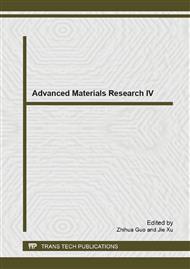p.280
p.284
p.288
p.293
p.300
p.305
p.311
p.316
p.323
Synthesis and Characterization of Sodium AMPS-Based Interpenetrating Network Hydrogels for Use as Temporary Wound Dressing
Abstract:
Hydrogel is one of the most interesting materials for use as wound dressing. In this study, interpenetrating network (IPN) hydrogels were synthesized by free radical copolymerization of sodium salt of 2-acrylamido-2-methylpropane sulfonic acid (AMPS) and N-vinylpyrrolidone (NVP), in the presence of poly (vinyl alcohol) (PVOH). The incorporation of PVOH offered the hydrophilicity to the hydrogel. The polymerization was carried out using N,N-methylene-bis-acrylamide and 4,4-azo-bis (4-cyanopentanoic acid) as a crosslinker and UV-photoinitiator, respectively. The successful of polymerization was indicated by gel content which was in the range of 86 90%. The structure of prepared hydrogels was confirmed by Fourier Transform Infrared Spectroscopy. In addition, the hydrogel-water interaction was investigated by mean of water content and water retention. Manipulation of the AMPS/NVP ratio significantly altered the properties of the hydrogels. As expected, the interaction of hydrogel and water decreased as increasing of NVP contents due to this monomer provides more hydrophobic functional groups. In conclusion, it is believed that the prepared AMPS/NVP/PVOH interpenetrating network hydrogels show the potential for use as temporary wound dressing.
Info:
Periodical:
Pages:
300-304
Citation:
Online since:
February 2014
Price:
Сopyright:
© 2014 Trans Tech Publications Ltd. All Rights Reserved
Share:
Citation:


